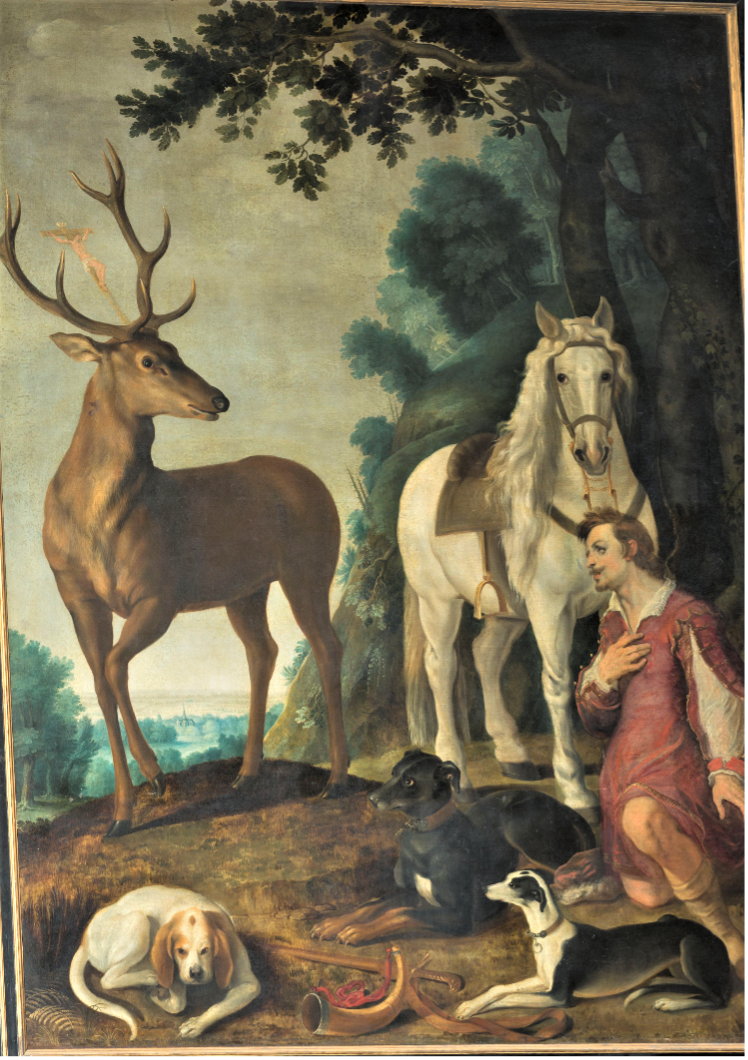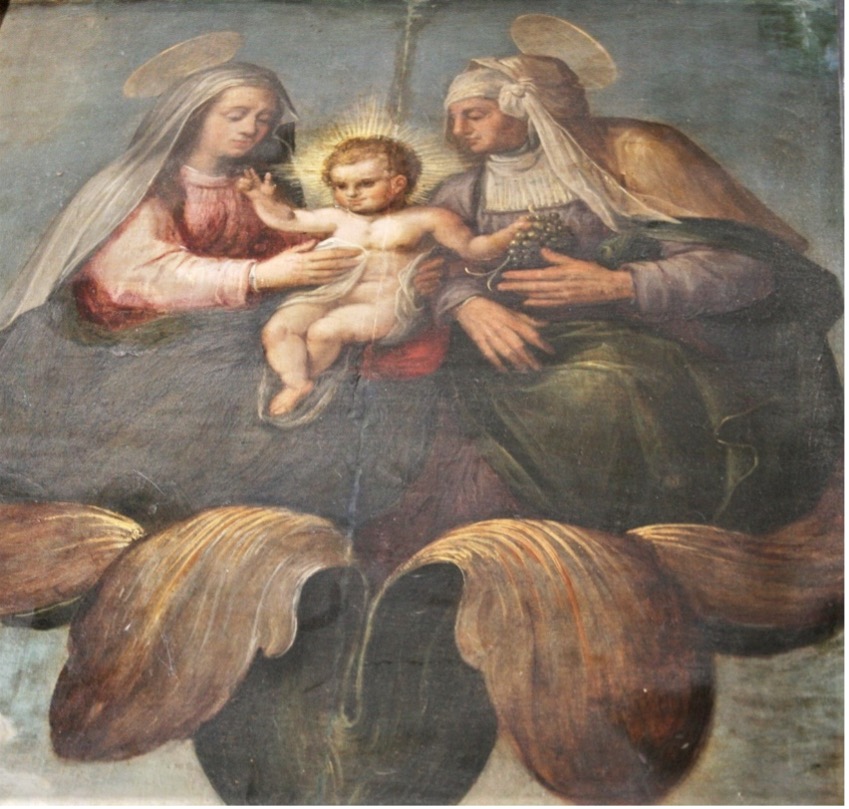North transept paintings on the left
Opposite, in the transept, is a large painting from the mid-17th century by Bruges painter
Jacob Van Oost the Elder, representing ‘The Conversion of Saint Hubert’. This
saint was a contemporary of Pépin de Herstal and Charles Martel. He was passionate about hunting
and even pursued the sport on Good Friday. He encountered a deer with a luminous cross
placed in the middle of its antlers. Having become a fervent follower of the faith, the saint succeeded Saint Lambert
in becoming bishop of Maastricht. He transferred the relics of Saint Lambert to Liège, which at the time
was only a village.
Below, we see the two side panels of a 16th century triptych. They are
portraits of the donors and their children, with behind them, their patron saints: Charles
de Tisnacq, and his two sons (Charles II and Englebert), with his patron Blessed
Charlemagne. On the right is his wife Catherine Boisot and daughter Catherine, with
their patron Saint Catherine behind them.
Charles de Tisnacq chaired the Privy Council, also called Consulta, from 1554 to 1573, under
King Philip II, King of Spain, during the turbulent period of the European wars of religion. He
was a friend of Count Lamoral d’Egmont and must therefore have felt that his loyalties were sometimes divided
during the bloody repression initiated by the Duke of Alba. Tisnacq succeeded his
brother-in-law as treasurer of the Order of the Golden Fleece. Charles died suddenly and
destitute in 1573, “because he had served honestly”, wrote Ludovic
Guichardini, the Italian historian and famous author of the 1567 ‘Description of the Low Countries’.
1567.
Above the confessional, is an anonymous 16th century panel painting
representing Saint Anne and Saint Joachim, parents of the Virgin, in front of a ravishing
Italianate landscape. At the top of the panel, are the Virgin Mary, Saint Anne and the infant
Jesus.

